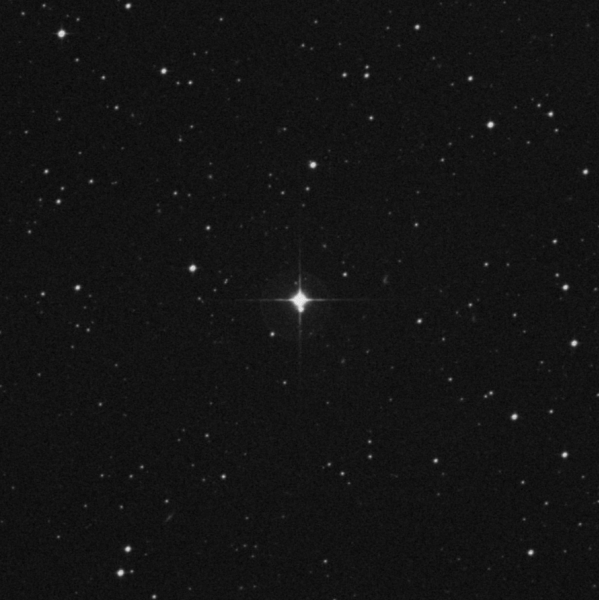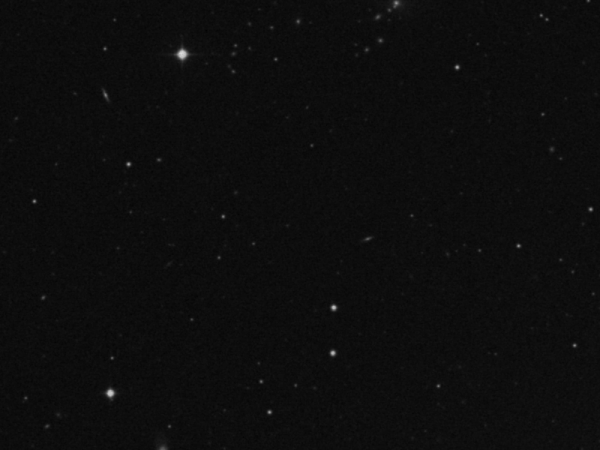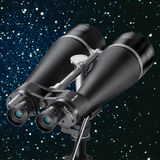
Friday, June 21
Tonight let's skip by the Moon and head straight for the stars. We're going to have a look at a tasty red orb, R Hydrae. You'll find it about a fistwidth south of Spica or about a fingerwidth west of Gamma Hydrae.
R was the third long term variable star to be discovered and it is credited to Giancomo Maraldi in 1704. While it had been observed by Johannes Hevelius some 42 years earlier, it was not recognized immediately because its changes happen over more than a year. At maximum, R reaches near 4th magnitude, but drops well below human eye perception to magnitude 10. During Maraldi's and Hevelius' time, this incredible star took over 500 days to change, but it has speeded up to around 390 days in the present century.
Why such a wide range? Science isn't really sure. R Hydrae is a pulsing M-type giant whose evolution may be progressing more rapidly than expected due to changes in structure. What we do know is that it is around 325 light-years away and is approaching us at around 10 kilometers per second.
In the telescope, R will have a pronounced red coloration which deepens near minima. Nearby is 12th magnitude visual companion star Ho 381, which was first measured for position angle and distance in 1891. Since that time, no changes in separation have been noted, which leads us to believe that the pair may be a true binary.

SS Hydrae - Palomar Observatory Courtesy of Caltech
Now let's take a look at another. While observing a variable star with the unaided eye, binoculars, or a telescope can be very rewarding, it's often quite difficult to catch changes in long-term variables, because there are times when the constellation is not visible. While R Hydrae is unique in color, let's drop about half a degree to the southeast to visit another variable star - SS Hydrae. SS is a quick change artist - the Algol-type. While you will need binoculars or a telescope to see this normally 7.7 magnitude star, at least its fluctuations are far more rapid, with a period of only 8.2 days. With R Hydrae we have a star that expands and contracts - causing the changes in brightness - but SS is an eclipsing binary. While less than a half magnitude is not a noteworthy amount, you will notice a difference if you view it over a period of time. Be sure to note that this is actually a triple star system, for there is also a 13th magnitude companion star located 13? from the primary. Watch if as often as possible and see if you can detect changes in the next few weeks!
Saturday, June 22
If you're up early, why not keep a watch out for the peak of the Tau Herculids meteor shower? These are the offspring of comet Schwassman-Wachmann 3, which broke up in 2006. The radiant is near Corona Borealis and we'll be in this stream for about a month. At best when the parent comet has passed perihelion, you'll catch about 15 per hour maximum. Most are quite faint and the westering Moon will interfere, but sharp-eyed observers will enjoy it.
Tonight let's have a look at a very bright and changeable lunar feature that is often overlooked. Starting with the great grey oval of Crater Grimaldi on the western limb, let your eyes slide along the terminator towards the south until you encounter the bright crater Byrgius. Named for Joost Burgi, who made a sextant for Tycho Brahe, this "seen on the curve" crater is really quite large with a diameter of 87 kilometers. Perhaps one of the most interesting features of all is high albedo Byrgius A, which sits along its east wall line and produces a wonderfully bright ray system. While it is not noted as a lunar club challenge, it's a great crater to help add to your knowledge of selenography!
Now let's try a visual double star for the unaided eye - Eta Virginis. Can you distinguish between a 4th and 6th magnitude pair?

Rho Virginis - Palomar Observatory Courtesy of Caltech
The brighter of the two is Zaniah (Eta), which through occultation had been discovered to be a triple star. In 2002, Zaniah became the first star imaged by combining multiple telescopes with the Navy Prototype Optical Interferometer. This was the first time the three were split. Two of them are so close that they orbit in less than half the distance between the Earth and Sun!
Binocular users should take a look at visual double Rho Virginis about a fistwidth west-southwest of Epsilon. This pair is far closer and will require an optical aid to separate. The brighter of this pair, Rho, is a white, main sequence dwarf with a secret? It's a variable! Known as a Delta Scuti type, this odd star can vary slightly in magnitude in anywhere from 30 minutes to two and a half hours as it pulsates.
For mid-to-large telescopes on a darker night, Rho offers just a little bit more. The visual companion star has a visual companion as well! Less than a half degree southwest of Rho is a small, faint spiral galaxy - NGC 4608 (Right Ascension: 12:41.2 - Declination: +10:09). At 12th magnitude, it's hard to see because of Rho's brightness - but it's not alone. Look for a small, but curiously shaped galaxy labeled NGC 4596 (Right Ascension: 12:39.9 - Declination: +10:11). Its resemblance to the planet Saturn makes it well worthwhile!
Sunday, June 23
Tonight the Moon is full. Often referred to as the "Full Strawberry Moon," this name was a constant to every Algonquin Indian tribe in North America. However, our friends in Europe referred to it as the "Rose Moon." The North American version came about because the short season for harvesting strawberries comes each year during the month of June - so the full Moon that occurs during that month was named for this tasty red fruit!
This evening as the Sun sets and the Moon rises opposite of it, take advantage of some quiet time and really stop to look at the eastern horizon. If you are lucky enough to have clear skies, you will see the Earth's shadow rising - like a dark, sometimes blue band - that stretches around 180 degrees of horizon. Look just above it for a Rayleigh scattering effect known as the "Belt of Venus." This beautiful pinkish glow is caused by the backscattering of sunlight and is often referred to as the anti-twilight arch. As the Sun continues to set, this boundary between our shadow and the arch rises higher in the sky and gently blends with the coming night. What you are seeing is the shadow of the Earth's translucent atmosphere, casting a shadow back upon itself. This happens every night! Pretty cool, huh?
For all you Stargazers, keep watch for the Omega Scorpiid meteor shower. Its radiant will be near the constellation of Ophiuchus, and the average fall rate will be about 20 per hour with some fireballs.
While you're out, take the time to check out Alpha Herculis-Ras Algethi. You will find it not only to be an interesting variable, but a colorful double as well. The primary star is one of the largest known red giants and at about 430 light years away, it is also one of the coolest. Its 5.4 magnitude greenish companion star is easily separated in even small scopes - but even it is a binary! This entire star system is enclosed in an expanding gaseous shell that originates from the evolving red giant. Enjoy it tonight.
Did you spot any of these objects and targets? Tell us in the comments!
Tammy Plotner is a professional astronomy author, President Emeritus of Warren Rupp Observatory and retired Astronomical League Executive Secretary. She's received a vast number of astronomy achievement and observing awards, including the Great Lakes Astronomy Achievement Award, RG Wright Service Award and the first woman astronomer to achieve Comet Hunter's Gold Status.























